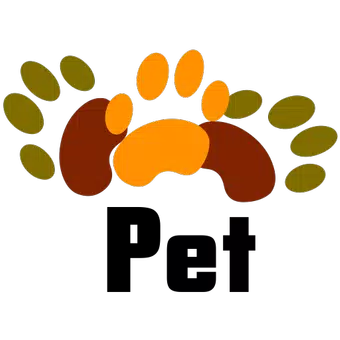MonkeyPox Apk is a viral zoonosis (a virus that spreads from animals to humans), the symptoms of which are similar to those seen in smallpox patients in the past, but less clinically severe. With the eradication of smallpox in 1980 and the subsequent termination of smallpox vaccination, MonkeyPox has become the most important public health orthopoxvirus. Monkeypox is found mainly in Central and West Africa, generally near tropical rainforests, and is becoming more prevalent in urban areas. Animal hosts include rats and many non-human primates.
Sanitary
Monkeypox virus is a double-stranded DNA virus belonging to the genus Orthopoxvirus of the Poxviridae family. The monkeypox virus has two distinct genetic groups: the Central African (Congo Basin) group and the West African group. Historically, the Congo Basin group has produced more serious diseases and is considered more contagious. The geographical difference between the two groups so far is Cameroon, the only country where both groups of viruses have been found.
The natural host of the monkeypox virus
Many species of animals have been identified as susceptible to the monkeypox virus. These include the rope squirrel, the tree squirrel, the Gambian possum, the dormice, the non-human primate, and other species. The natural history of the monkeypox virus remains uncertain and further studies are needed to identify specific reserves and how the virus circulates in nature.
Survival
Among humans, the monkeypox was first identified in 1970 in a 9-year-old boy in the Democratic Republic of Congo, where smallpox was eradicated in 1968. Since then, most of the cases have been reported in rural rainforests. There have been increasing reports of humanitarian cases in the Congo Basin, particularly in the Democratic Republic of Congo, and throughout Central and West Africa.
Since 1970, human cases of monkeypox have been reported in 11 African countries: Benin, Cameroon, Central African Republic, Democratic Republic of Congo, Gabon, Ivory Coast, Liberia, Nigeria, Congo Republic, and Sierra Leone. And South Sudan. The real burden of monkeypox is unknown. For example, an outbreak was reported in the Democratic Republic of Congo in 1996-1997, with a lower than normal mortality rate and a higher than normal attack rate. Simultaneous outbreaks of varicella (caused by the non-orthopedic virus varicella virus) and monkeypox were noted, which in this case may explain the true or obvious changes in transmission dynamics. Since 2017, Nigeria has seen a major outbreak with more than 500 suspected cases and more than 200 confirmed cases and a mortality rate of about 3%. Cases still come to light today.
Monkeypox is a global public health anxiety disorder that affects not only the countries of West and Central Africa but the rest of the world. In 2003, the first outbreak of monkeypox outside Africa occurred in the United States and was linked to contact with infected prairie dogs. The pets were kept with Gambian poems and dormouse imported from Ghana. More than 70 cases of Benderpox have been reported in the United States since the outbreak in September 2018 from Nigeria to Israel, September 2018 to Singapore, December 2019, May 2021, May 2022 to Singapore, and May 2019 to Singapore. In the United States in July and November 2021. By May 2022, several cases of monkeypox had been identified in some non-native countries. Studies are underway to better understand the epidemiology, sources of infection, and transmission patterns.
Transmission
Animal-to-human transmission (zoonosis) can be caused by direct contact with blood, body fluids, skin lesions, or the mucous membranes of infected animals. In Africa, evidence of Monkeypox virus infection has been found in many animals, including rope squirrels, tree squirrels, Gambian predatory rats, crows, various species of monkeys, and more. Natural resources for monkeypox have not yet been identified, although rats are the most likely. Eating less cooked meat and other animal products than infected animals is a potential risk factor. People who live in or near wild areas may be exposed to indirect or slightly infected animals.
It can be transmitted from person to person through respiratory juices, skin breakouts of an infected person, or recent close contact with contaminants. Airborne drops usually require prolonged face-to-face contact, which increases the risk for medical personnel, household members, and other close contacts of active affairs. However, the longest documentary series aired in the community has grown from six to nine consecutive person-to-person infections in recent years. This could reduce the risk of vaccination in all communities due to the termination of smallpox vaccination. Transmission can also occur from close contact between mother and fetus (which can lead to congenital monkeypox) or in the placenta during and after birth. Although intimate physical contact is a known risk factor for transmission, it is unclear at this time whether monkeypox can only be sexually transmitted. Studies are needed to better understand this risk.
Signs and symptoms
The incubation period for monkeypox (from infection to onset of symptoms) is usually 6 to 13 days but can range from 5 to 21 days.
Transformation can be divided into two stages:
The onset of the attack (lasting 0-5 days) is characterized by fever, severe headache, lymphadenopathy (swelling of the lymph nodes), back pain, myalgia (muscle pain), and acute instability (lack of energy). Lymphadenopathy is a characteristic feature of monkeypox from other diseases that may initially look similar (varicella, measles, and varicella), with rashes usually starting 1 to 3 days after the onset of fever. The rash focuses on the face instead of the upper part of the body and disappears. It affects the face (in 95% of cases), the palms of the hands, and the soles of the feet (in 75% of cases). Oral mucous membranes (70% of cases), genitals (30%), conjunctiva (20%), and cornea are affected. Blisters (flat-based lesions) to papules (permanent, slightly higher lesions), vesicles (clear fluid-filled lesions), blisters (yellow fluid-filled lesions), and blisters that grow slowly. Blooms and develops. The number of injuries ranges from a few to thousands. In severe cases, sores may form until large areas of skin are removed.
Monkeypox is a self-limiting disease in which the symptoms usually last for 2 to 4 weeks. Severe cases are more common in children and are related to the level of exposure to the virus, the patient's medical condition, and the nature of the complications. Lack of inherited immunity can have serious consequences. Although smallpox vaccination has provided protection in the past, people between the ages of 40 and 50 (depending on the country) may be more susceptible to monkeypox today as the smallpox vaccination campaign around the world has stopped since the disease was eradicated. . Complications of monkeypox may include secondary infections, corneal infections, bronchopneumonia, sepsis, encephalitis, and loss of vision. The degree to which asymptomatic infections can occur is unknown.
Historically, the mortality rate from monkeypox in the general population ranged from 0% to 11% and was highest among young children. Recently, the mortality rate has been around 3-6%.
Diagnosis
Various clinical diagnoses include chickenpox, measles, bacterial skin infections, itching, syphilis, and other rash diseases such as drug allergies. During the prodromal phase of the disease, lymphadenopathy may be a clinical symptom to distinguish monkeypox from varicella or varicella.
If monkeypox is suspected, medical personnel should collect the appropriate sample and deliver it safely to a laboratory with the required capacity. Monkeypox confirmation depends on the type and quality of the sample and the type of laboratory test. Therefore, samples should be packed and shipped according to national and international requirements. Polymerase chain reaction (PCR) is the preferred laboratory test due to its accuracy and sensitivity. Therefore, the best clinical patterns for monkeypox include skin lesions: blisters and blisters or liquid and dry blisters. If possible, a biopsy is an option. Ghana samples should be stored in a dry, sterile tube (no viral transport media) and in the refrigerator. PCR blood tests are usually inadequate due to the shorter duration of vermiculite compared to the collection of samples after the onset of symptoms and should not be taken regularly from patients.
Because the orthopoxvirus is serologically cross-reactive, antigen and antibody detection methods do not provide definitive confirmation of monkeypox. Therefore, serological and antigen research methods are not recommended for diagnosis or case investigation when resources are limited. In addition, vaccine-based vaccines (e.g., people who have been vaccinated before the eradication of smallpox or who have recently been vaccinated for high-risk vaccines, such as orthopoxvirus laboratory staff) recently or away - draw vaccines can cause false positives. The results lead to results.
To interpret the test results, it is important to provide patient information with samples including a) Fever onset date, b) Rash onset date, c) Sample collection date, d) Current condition of the person (stage of eruption) and Age.
Vaccination
In some observational studies, the smallpox vaccine has been shown to be about 85% effective in preventing monkeypox. Therefore, early vaccination against smallpox can lead to mild illness. Evidence of a previous smallpox vaccine is usually found in the form of a scar on the upper arm. Currently, the original smallpox vaccine (first generation) is no longer available to the general public. Some laboratory or healthcare workers may have been vaccinated against smallpox in the workplace to protect against smallpox. In 2019, a new vaccine based on a modified attenuated vaccine virus (Ankara strain) to prevent monkeypox was approved. It is a two-dose vaccine with limited availability. Smallpox and monkeypox vaccines are being developed in vaccine-based formulations due to the cross-protection offered by the immune response against the orthopoxvirus.
MonkeyPox Apk Important facts
- Monkeypox is caused by the monkeypox virus, which is a member of the orthopoxvirus genus in the Poxviridae family.
- Monkeypox is a viral zoonosis that occurs mainly in the tropical forest regions of Central and West Africa, occasionally exported to other regions.
- MonkeyPox usually presents clinically with fever, rash, and swollen lymph nodes and can cause a variety of medical complications.
- Monkeypox is a self-limiting disease in which the symptoms usually last for 2 to 4 weeks. Serious cases can occur. Recently, the mortality rate has been around 3-6%.
- Monkeypox is transmitted to humans through close contact with an infected person or animal or through material contaminated with the virus.
- The monkeypox virus is spread from person to person through close contact with contaminated materials, such as wounds, body fluids, drops, and bedding.
- The clinical manifestations of monkeypox are similar to those of smallpox, with orthopedic virus-related infections being reported worldwide in 1980. Monkeypox is less contagious than smallpox and causes less serious illness.
- Vaccines used during the smallpox eradication program also provide protection against monkeypox. New vaccines have been developed, one of which has been approved for the prevention of monkeypox.
- Antivirals developed to treat smallpox have also been approved for the treatment of monkeypox.
Conclusion
We believe you have now good knowledge about the MonkeyPox Apk Download. The mentioned details are enough to describe this Apk for your use. If you really like the provided information about the App, please review and share it with all your friends who love this type of App Apk.






